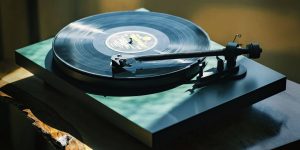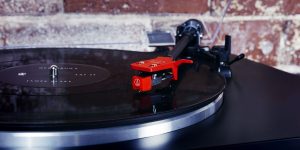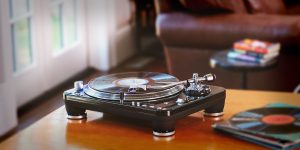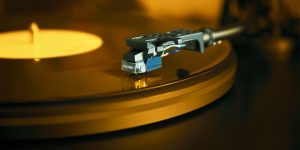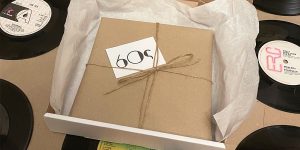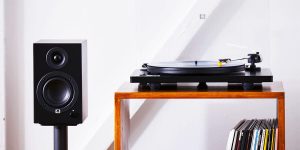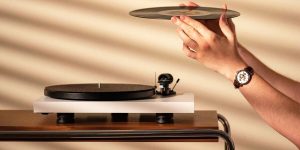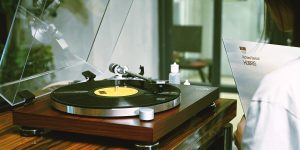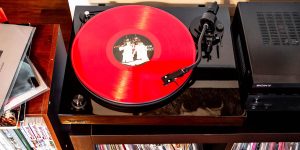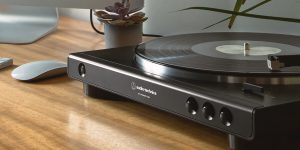If you’re a vinyl lover, you know the importance of having a great sound system to play your records on. But if you’re not quite sure how to connect your turntable to your speakers, don’t worry – we’ll show you how easy it is!
Keep reading for step-by-step instructions on how to set everything up. You’ll be listening to your favorite albums in no time.
Four main components of a turntable setup
Any turntable setup has four main components: the turntable, the preamp, the amplifier, and the speakers. Let’s take a closer look at each one.
The Turntable
The first piece of equipment you’ll need is, of course, the turntable itself. If you don’t have one yet, check out our guide on choosing the best turntable for your needs. Once you’ve got your turntable, it’s time to move on to the next component.
The Preamp
The preamp is a small device that sits between the turntable and the amplifier. It boosts the signal from the turntable so that it can be played through the amplifier and speakers. Most turntables come with a built-in preamp, but if yours doesn’t, you’ll need to purchase one separately.
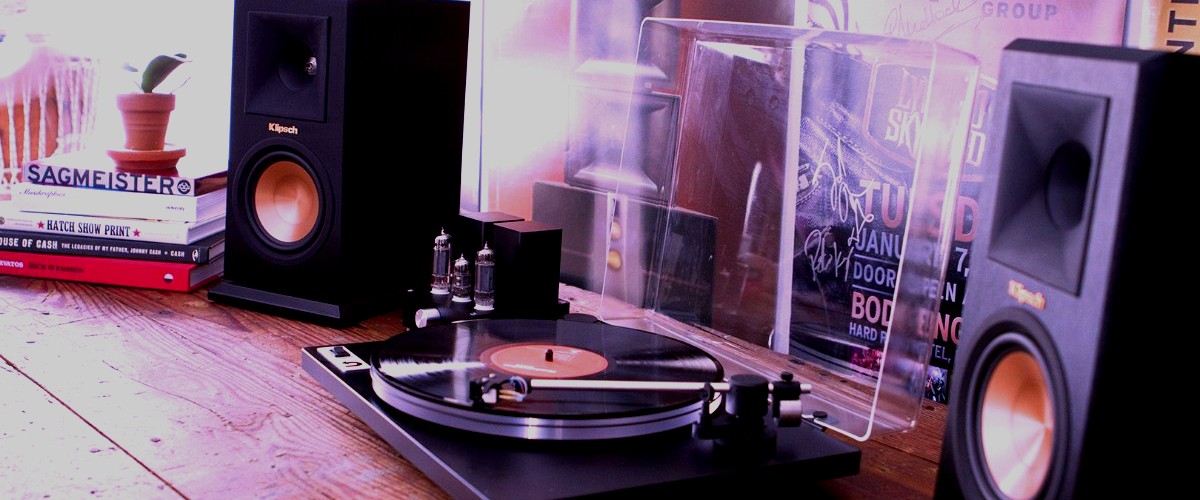
The Amplifier
The amplifier is what takes the signal from the preamp and amplifies it so that it can be played through the speakers. If you’re using a stereo system with an integrated amplifier, you can skip this step – the amplifier is built into the receiver.
The Speakers
Finally, you’ll need a pair of speakers to play the music through. If you’re using a turntable with a built-in preamp, you can connect it directly to a pair of powered speakers. You’ll need to connect the amplifier to the speakers if you’re using a separate preamp. Speakers can be active and passive. Active speakers have a built-in amplifier, while passive speakers need an external amplifier to work.
What about speaker wires?
When it comes time to connect the wire to the speaker, you’ll need to ensure that the correct conductor is connected to the correct terminal. The wire has two conductors – a positive and a negative – that carry the electrical signal to the speaker. On most speakers, the positive terminal is marked with a + sign, while the negative terminal is marked with a – sign. The positive conductor is usually red, while the negative conductor is usually black. If you’re unsure which one is, consult your speaker’s manual.
Instructions for a connecting turntable to speakers
- Start by placing your turntable on a stable surface near your speakers.
- If your turntable has a built-in preamp, skip to step 4. You’ll need to connect a separate preamp to the turntable if it doesn’t.
- To do this, first, locate the “phono” inputs on the back of the preamp. These will be labeled “L” and “R” for the left and right channels.
- Next, find the matching outputs on the back of your turntable. Connect the left output to the left input on the preamp and the right output to the right input.
- If your stereo receiver has a built-in amplifier, you can connect the preamp directly to the receiver. You’ll need to connect the preamp to an external amplifier if it doesn’t.
- To do this, locate the “line” inputs on the back of the amplifier. These will also be labeled “L” and “R” for the left and right channels.
- Then, find the matching outputs on the back of the preamp. Connect the left output to the left input on the amplifier and the right output to the right input.
- Finally, connect the amplifier to your speakers. Using passive speakers, use speaker wire to connect the amplifier to the speakers. If you’re using active speakers, they will have a power cord that you can plug into an outlet.
Now that you know the basics of how to connect a turntable to speakers, you can start enjoying your vinyl collection.
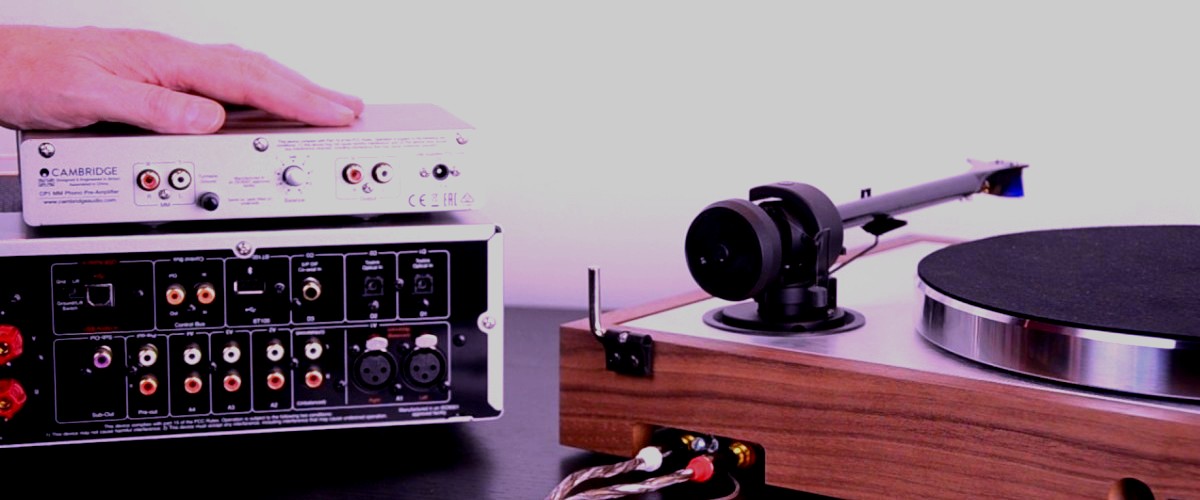
How to get the best sound quality from your setup
Now that you know how to connect your turntable to your speakers, it’s time to fine-tune the sound. Here are a few tips to get the best sound quality from your setup:
- Make sure all of the components in your system are of high quality. It includes the turntable, preamp, amplifier, and speakers.
- If you’re using a turntable with a built-in preamp, make sure the switch is set to “phono” instead of “line.” It will give you the best sound quality.
- Adjust the tracking force on your turntable. The amount of pressure the stylus (needle) applies to the record. The ideal tracking force is between 1.5 and 2.5 grams.
- Check the tonearm height and make sure it’s level with the platter. The tonearm should be parallel to the ground when it’s resting on the platter.
- Make sure your speakers are positioned correctly. They should be at least a few feet away from walls or corners.
- Experiment with positioning your speakers until you find the sweet spot. It is the position where the sound is most precise and accurate.
- Adjust the volume on your amplifier so that it’s not too loud or too soft. You should be able to hear all of the details in the music without being blasted by a loud sound.
- Finally, sit back and enjoy your music! Now that you know how to set up a turntable, you can start enjoying your vinyl collection. With a bit of practice, you’ll be able to fine-tune your system to get the best sound quality possible.
Advantages of the connecting turntable to the speaker
There are several advantages to connecting a turntable to speakers.
First, it allows you to listen to your vinyl collection without using an amplifier or receiver. It can save you money on equipment costs.
Second, it gives you more control over the sound quality of your music. For example, you can adjust the tracking force, tonearm height, and speaker positioning to get the best sound possible.
Finally, it allows you to listen to your music at any volume without disturbing your neighbors.
Disadvantages of the connecting turntable to the speaker
There are a few disadvantages of such a connection.
First, it can be difficult to find the sweet spot for your speakers. If they’re not positioned correctly, you won’t get the best sound quality.
Second, you won’t be able to use your receiver’s equalizer or other features to customize the sound.
Third, you’ll need to be careful not to damage your turntable or speakers by playing the music too loud.
With a bit of practice, you can overcome these disadvantages and get the best sound quality from your turntable.
We are supported by our audience. When you purchase through links on our site, we may earn an affiliate commission at no extra cost to you.
Our newsletter
* We will never send you spam or share your email with third parties

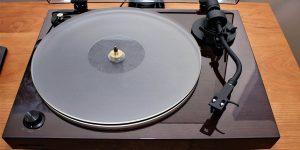

![Best Turntables Under $100 [Reviewed and Tested]](https://righttechadvice.com/wp-content/uploads/2023/09/best-turntable-under-100-300x150.jpg)
![Best Turntables Under $300 [Reviewed and Tested]](https://righttechadvice.com/wp-content/uploads/2023/10/best-turntable-under-300-review-300x150.jpg)
![Best Record Players Under $200 [Reviewed and Tested]](https://righttechadvice.com/wp-content/uploads/2023/10/best-turntable-under-200-300x150.jpg)
